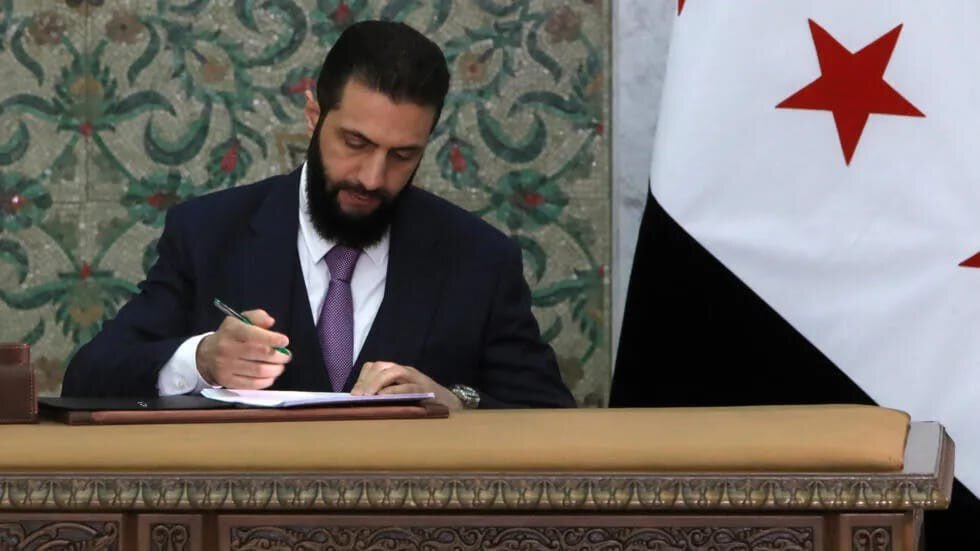Syria: Fake democracy on the ruins of a divided nation

BEIRUT—Syria witnessed elections to elect two-thirds of the members of the new People’s Assembly in a celebratory media spectacle.
The so-called transitional authority, led by de facto president Ahmed al-Sharaa (formerly known as Abu Muhammad al-Julani), attempted to promote a supposed democratic illusion at a time when the most basic elements of legitimacy and popular participation were absent.
The elections, held in 50 constituencies within a few hours, were nothing more than a closed-door political show, limited to pre-appointed “electoral bodies,” without the genuine participation of the Syrian people, who live in a state of geographic and political division, amid a tragic humanitarian landscape across vast swathes of the country.
This political beautification of the upper hand coincided with profound transformations in the symbolic structure of the state and the undeclared rush toward normalization with the Zionist enemy, amidst the absence of unifying national values.
The final third of the new council’s members will not be elected, but will be directly appointed by Sharia law, a practice that reinforces the concept of authoritarian power under the guise of “national balances,” which the transitional administration seeks to establish in the post-Bashar al-Assad era.
What is clear, however, is that these “balances” merely reflect new centers of influence established by de facto arrangements, not a reflection of a national will or a new social contract.
The transitional administration effectively controls less than two-thirds of the country, while areas such as the Kurdish Autonomous Administration and Suwayda remain outside the political process, rendering the elections incomplete in terms of legitimacy and geographic and political representation.
The HTS–affiliated media’s promotion of a decorative electoral spectacle did not stop at the closed “ballot,” but extended to deliberate attempts at symbolic normalization, promoting the candidacy of Henry Hamra, a Syrian-American Jew, as the first Jew to run for parliament since 1967.
This suspicious move appears, in its temporal and political context, to be part of a process of beautifying an authoritarian regime.
It reflects less real openness than a blatant political exploitation of the issue of sects and minorities within an international context pushing for settlements and gradual normalization with the Zionist enemy.
It was no surprise that this move coincided with the cancellation of national occasions that had constituted the pillars of Syrian collective identity, such as Martyrs’ Day and the October War Anniversary, and their replacement with Revolution Day and Liberation Day, which coincide with the anniversary of Assad’s fall.
This indicates the transitional regime’s desire to write a new history tailored to the political moment and the current power centers.
Meanwhile, the emergence of extremist groups within the new governing structure is becoming clear, with the creation of the position of “Chief Justice Officer”—also known as “Sheikh”—who oversees the judicial system without legal authority.
This so–called Chief Justice Officer is appointed based on loyalty to Hay’at Tahrir al-Sham, even if he lacks legal qualifications.
This move is nothing more than an attempt to give the justice system a religious-authoritarian character.
Further, it embodies the collapse of the concept of a civil state based on law, clearly reflecting the shift toward a project based on disguised sectarianism and fabricated legitimacy.
The elections were merely a smokescreen for a comprehensive restructuring of Syria’s national and constitutional identity, orchestrated behind the scenes by regional and international influences, while cities like Sweida in southern Syria are left to endure various crises.
While elections were being held in Damascus, bakeries in Sweida were shut down due to shortage of flour and the region was deprived of electricity and water.
Official silence suggests a premeditated intention to isolate and starve these areas, having been politically excluded from the post-Assad landscape.
On the other hand, the pace of courtship toward Moscow is accelerating in an attempt to find a regional balance against American and Israel.
The repeated visits of Sharaa and his military and diplomatic delegations to Russia, their photo-ops with Russian S-400 air defense systems, and their denial of their significance after sparking controversy, reveal a fragile strategy seeking to strike a balance through formalities.
The de facto regime has not expressed any real objection to the ongoing Israeli attacks on Syria. It has instead remained silent or issued formal condemnations, reinforcing suspicions about the existence of unannounced arrangements under the table to facilitate future political normalization projects.
What is happening today in Syria is not a democratic transition. Rather, it is the reproduction of a repressive authority with new faces, attempting to exploit the slogans of the revolution to establish legitimacy based on monopolization, exclusion, and sectarianism.
It is a distorted sectarian democracy, in which minorities and religious pluralism are used as public relations cards.
The Syrian people, excluded from both the ballot box and decision-making, continue to pay the price of international and regional rivalries will not be allowed to be free and sovereign.
Leave a Comment